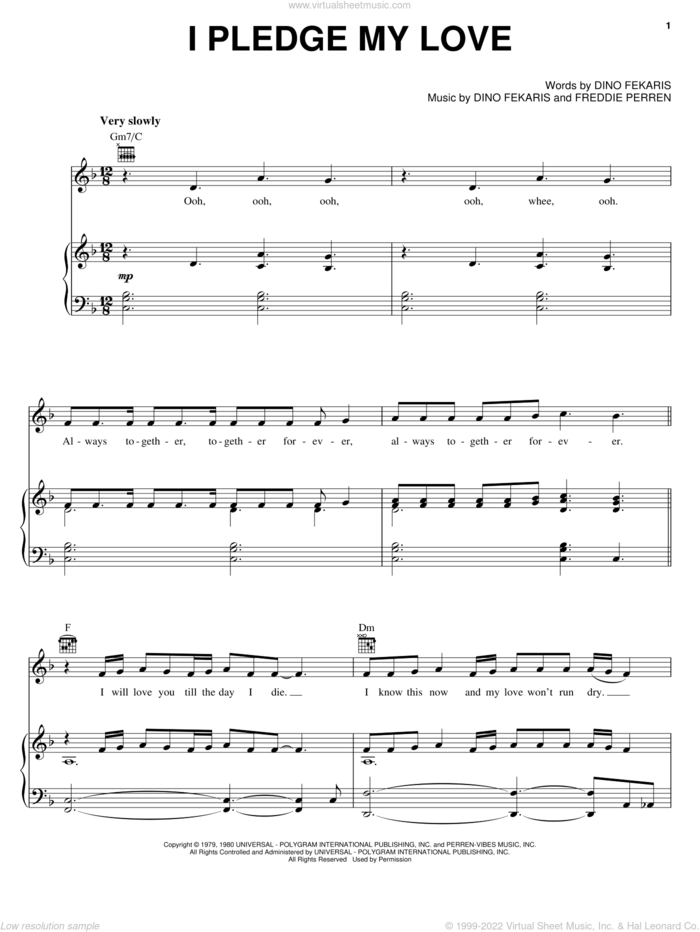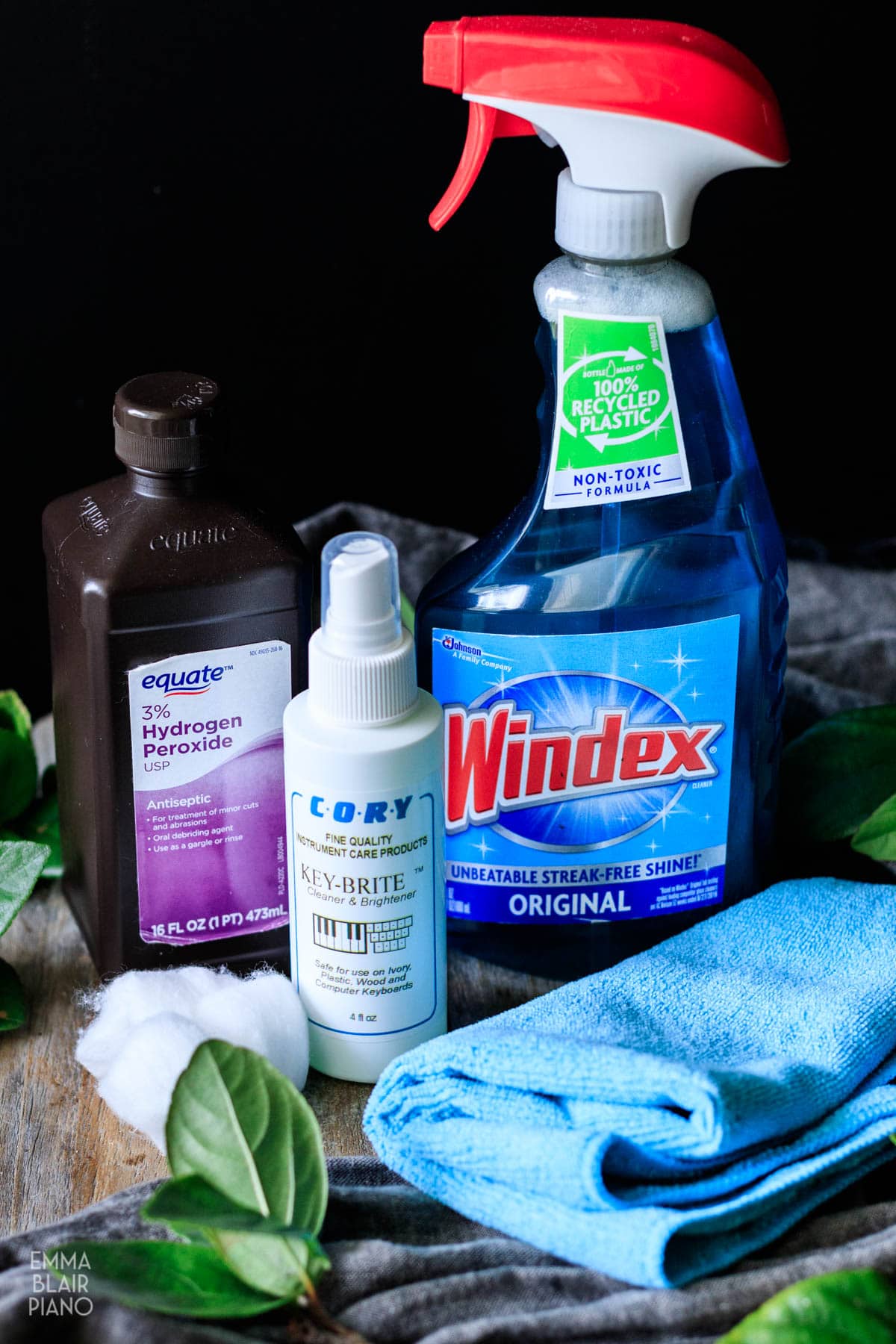No, you should not use Pledge on a piano. Pledge can damage the piano’s finish.
In the meantime, don't forget to unlock a world of unlimited sound with Amazon Music Unlimited, where over 100 million songs wait at your fingertips. Whether you're working, relaxing, or fueling your creativity, the right track is always just one tap away. Elevate every moment with music that moves you.
Maintaining the luster of your piano requires proper care and attention. Pianos, with their wood finishes and intricate mechanisms, demand specific cleaning methods. Products like Pledge might seem convenient for dusting and shining household furniture, but when it comes to pianos, they’re not the best choice.
This common household cleaner contains chemicals and silicones that can harm piano surfaces, potentially leading to long-term aesthetic and functional problems. For piano enthusiasts aiming to preserve their instrument’s beauty, it’s essential to seek out cleaning solutions designed specifically for pianos. Choosing the right products will keep your piano looking its best and ensure its longevity for years of musical enjoyment.
The Pledge Formula
Maintaining the shiny appearance of your piano is essential for its beauty and longevity. Pledge is a well-known furniture polish that promises to clean and protect wood surfaces. But is it right for your piano? Let’s delve into the Pledge formula to understand its suitability for such a delicate instrument.
Ingredients In Pledge
Pledge contains several components designed to offer a dust-free shine. Here’s what’s inside:
- Water acts as a base for the formula.
- Silicones provide a smooth, protective coating.
- Waxes enhance the shine and protect the surface.
- Emulsifiers help in mixing oil and water components.
- Propellants are used in aerosol products to disperse the solution.
- Fragrance adds a pleasant scent to your furniture.
How Pledge Interacts With Wood And Finishes
Your piano isn’t just another piece of furniture; it’s a finely-crafted instrument. The interaction between Pledge and your piano is crucial:
- Silicones create a shiny layer but may build up over time.
- Waxes can help protect the wood but might affect the sound quality.
- Emulsifiers and propellants have no lasting benefit for the wood.
- The use of Pledge on pianos is under debate among professionals.
A piano’s finish can react differently to various substances. Overtime, Pledge may lead to a cloudy appearance on your piano’s surface. While some finishes are more resilient, using Pledge on antique or shellac-finished pianos might not be advisable.

Credit: www.virtualsheetmusic.com
Types Of Piano Finishes
Understanding the delicate surface of a piano is key to keeping its elegance. Different pianos boast different finishes, each requiring unique care. Learn about the types of piano finishes. Apply the right touch to maintain the piano’s splendor.
Traditional Lacquer
Traditional lacquer gives pianos a deep, glossy look. This finish, often on older pianos, offers a warmth in appearance. It requires gentle care, sensitive to scratches and environmental changes.
- Avoid harsh chemicals: Stick to mild cleaners.
- Wipe with soft cloths: Use microfiber or cotton to prevent scratches.
Modern Polyurethane
Pianos with modern polyurethane finishes shine, too. They’re tougher and more resistant to damage. This contemporary coating stands up better to wear.
- Resists water and heat: More durable against accidents.
- Requires less upkeep: Ideal for busier settings.
Piano Finish Maintenance Basics
Maintaining a piano’s luster involves simple, regular steps. Careful and consistent cleaning protects these musical treasures. Here are your piano finish maintenance basics:
- Dust regularly: Use a soft, dry cloth to remove dust.
- Clean with the correct product: Choose a cleaner that matches your piano’s finish.
- Avoid overspraying: Spray cleaner onto the cloth, not directly onto the piano.
- Polish with care: Use a separate, clean cloth for polishing.
Risks Of Using Pledge On Pianos
Pianos demand special care, and using the wrong products can be risky. Understanding these risks before reaching for a cleaning solution like Pledge is crucial for maintaining the integrity of your piano.
Potential For Chemical Damage
Many households use Pledge for dusting and polishing, but it’s not ideal for pianos. Pianos have delicate finishes that can be harmed by the chemicals in Pledge. This furniture polish contains silicones and other solvents that may react negatively with the piano’s surface. Over time, these substances can:
- Break down the wood finish.
- Create a dull or cloudy appearance.
- Eat away at varnish or lacquer.
Long-term Effects On Piano Surfaces
Immediate damage is not the only concern. Long-term use of Pledge on a piano can lead to compounded issues. These can include:
- Buildup of greasy residue that attracts dust.
- Difficulty in future restorations due to residual film.
- Reduced value of the piano over time.
In conclusion, it’s best to avoid Pledge and opt for products designed specifically for pianos to ensure your instrument remains in pristine condition.
Safer Alternatives For Piano Cleaning
Pianos need special care. They are not just instruments but also elegant pieces of furniture. Using the wrong cleaning products on your piano, like Pledge, can harm its delicate finishes and internal mechanics. It is vital to choose the right methods and materials for cleaning to maintain its beauty and functionality.
Recommended Products For Piano Care
The market offers special products for piano maintenance. Look for premium piano polishes and gentle cleaning agents that are safe for high gloss and satin finishes. Read labels closely to ensure they are appropriate for your particular piano type.
- Piano-specific cleaning solution: Designed for the outer surfaces of pianos.
- Microfiber cloths: Soft and effective for dusting and polishing.
- Keyboard cleaner: Safeguards the keys’ material.
Diy Cleaning Solutions
If you prefer homemade options, several safe and gentle DIY solutions exist. These avoid harsh chemicals and abrasive materials that could damage your piano.
Prepare a simple mixture using ingredients like diluted vinegar and water. Always apply with a soft cloth and never spray directly on the piano. Test a small, inconspicuous area first to ensure no damage occurs.
Professional Piano Maintenance
Cherishing your piano means more than just playing melodious tunes. It requires professional care. Pianos, like all high-precision instruments, need regular maintenance to deliver their best sound and playability. The intricate woodwork and complex internal mechanisms are sensitive. They can degrade with time and usage. Many owners ponder about using common furniture polish, like Pledge, on their piano. Yet, the best care often comes from those with the right expertise.
When To Call A Professional
- Unusual mechanical noises during play
- Sticky or unresponsive keys
- Fluctuations in humidity leading to wood damage
- Regular wear and tear over time
The beauty and integrity of your piano may suffer from inadequate care. A professional knows what cleaning agents are safe. They preserve the piano’s finish without causing harm. Don’t risk your instrument’s longevity by using Pledge or similar products. Instead, let a trained technician treat your piano with the precision it deserves.
Regular Tuning And Cleaning Schedules
A piano is not just another piece of furniture. It is a sophisticated musical instrument. Therefore, it requires more than just dusting. Setting up a regular tuning and cleaning schedule is crucial.
| Service | Frequency |
|---|---|
| Tuning | At least twice a year |
| Cleaning | As needed, or during tuning appointments |
| Professional Inspection | Annually |
Sticking to these maintenance routines ensures your piano persists in perfect harmony for years to come. Professional tuners and cleaners use techniques and products designed specifically for pianos, to safeguard not only the appearance but also the sound and responsiveness.

Credit: www.reddit.com
Best Practices For Preserving Piano Shine
Best Practices for Preserving Piano Shine are crucial to maintaining the elegant appearance and value of your instrument. A well-polished piano not only reflects the beauty of its design but also speaks volumes about the care given to it. To protect the sophisticated finish and keep it sparkling, piano owners must adhere to several important practices.
Dusting Techniques
Proper dusting is the first step in keeping a piano shining. Use a soft, microfiber cloth designed to grab and lift dust particles without scratching the surface.
- Gently wipe the piano’s surfaces in a straight, back-and-forth motion.
- Avoid circular motions to prevent swirl marks.
- Minimize pressure to protect the finish.
Do not use feather dusters, as they can scratch the piano’s surface and scatter dust onto sensitive parts.
Avoiding Environmental Damage
Environmental factors can dull your piano’s finish over time. Maintain its luster by protecting it from direct sunlight and extreme temperatures.
| Environmental Factor | Protection Method |
|---|---|
| Sunlight | Position away from windows or use curtains. |
| Humidity | Opt for a dehumidifier or humidifier as needed. |
| Heat | Keep at a stable room temperature. |
Regularly assess the piano’s environment to prevent irreversible damage to its surface.

Credit: emmablairpiano.com
Can I Use Pledge on my Piano to Clean it?
Yes, you can use Pledge on your piano to clean it. However, be sure to use it sparingly and avoid getting any on the piano keys. Always check the piano sheet music availability for your favorite songs before starting your practice sessions.
Frequently Asked Questions Of Can You Use Pledge On A Piano
What Do You Polish A Piano With?
Polish a piano with a microfiber cloth and specific piano polish. Avoid spraying directly onto the instrument; apply to the cloth first. Use gentle, circular motions for the best results.
Can You Use Wood Polish On A Piano?
Yes, you can use wood polish on a piano, but select a polish appropriate for its finish. Always test a small, inconspicuous area first.
What Is The Best Wood Cleaner For Pianos?
The best wood cleaner for pianos is a gentle, microfiber cloth slightly dampened with water or a dedicated piano cleaning solution. Avoid harsh chemicals to protect the finish.
What Cleaners Are Safe For Pianos?
For piano cleaning, use a soft, damp cloth and mild soap. Avoid harsh chemicals and spray cleaners to prevent damage.
Conclusion
Caring for your piano requires the right approach. Pledge, while popular for dusting, isn’t ideal for this instrument. Opt for specifically-designed piano cleaners to protect the wood and maintain its luster. Remember, choosing the proper cleaning products ensures your piano’s longevity and preserves its beautiful sound for years to come.
{ “@context”: “https://schema.org”, “@type”: “FAQPage”, “mainEntity”: [ { “@type”: “Question”, “name”: “What do you polish a piano with?”, “acceptedAnswer”: { “@type”: “Answer”, “text”: “Polish a piano with a microfiber cloth and specific piano polish. Avoid spraying directly onto the instrument; apply to the cloth first. Use gentle, circular motions for the best results.” } } , { “@type”: “Question”, “name”: “Can you use wood polish on a piano?”, “acceptedAnswer”: { “@type”: “Answer”, “text”: “Yes, you can use wood polish on a piano, but select a polish appropriate for its finish. Always test a small, inconspicuous area first.” } } , { “@type”: “Question”, “name”: “What is the best wood cleaner for pianos?”, “acceptedAnswer”: { “@type”: “Answer”, “text”: “The best wood cleaner for pianos is a gentle, microfiber cloth slightly dampened with water or a dedicated piano cleaning solution. Avoid harsh chemicals to protect the finish.” } } , { “@type”: “Question”, “name”: “What cleaners are safe for pianos?”, “acceptedAnswer”: { “@type”: “Answer”, “text”: “For piano cleaning, use a soft, damp cloth and mild soap. Avoid harsh chemicals and spray cleaners to prevent damage.” } } ] }As an Amazon Associate, Cleanestor earns from qualifying purchases at no additional cost to you.

